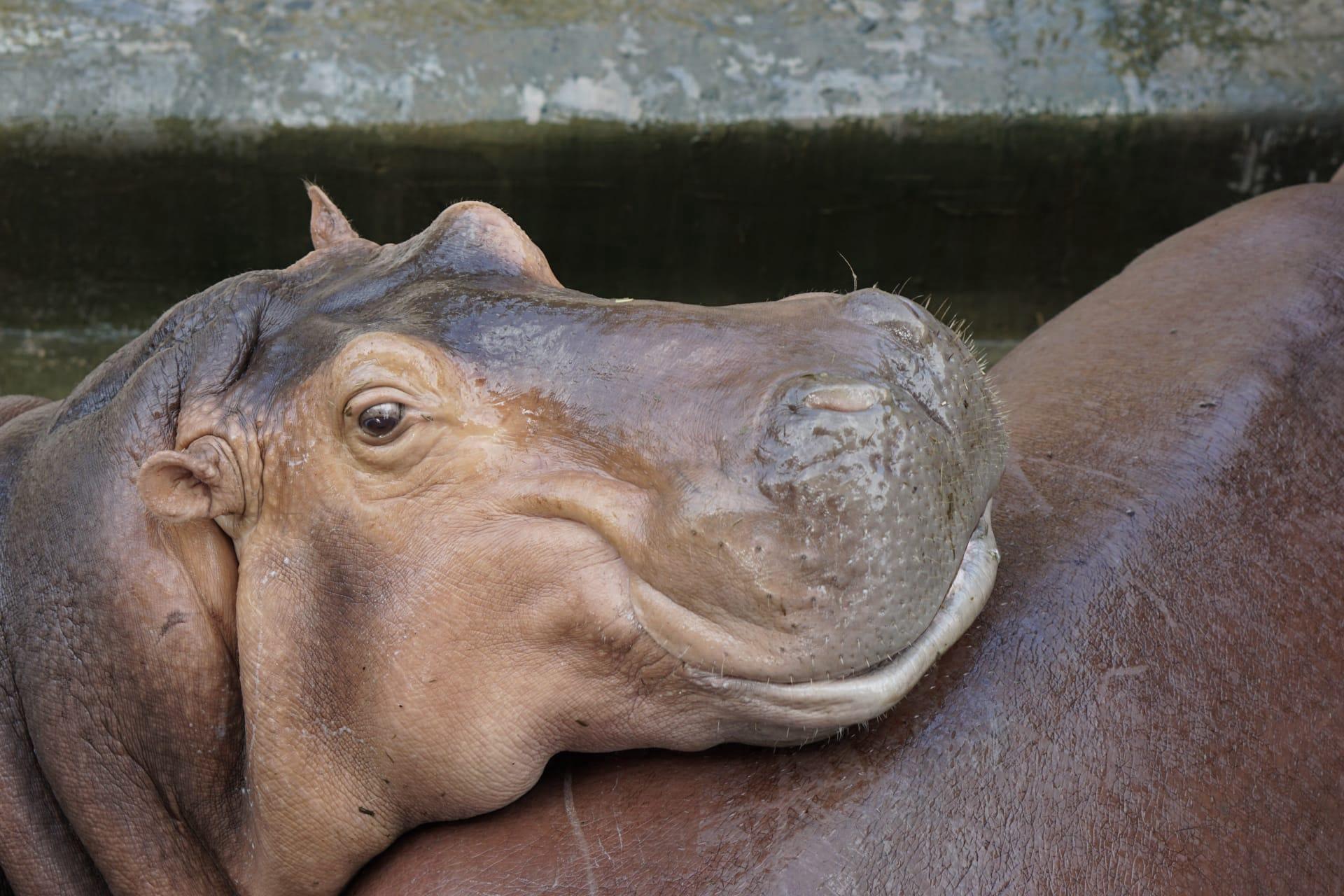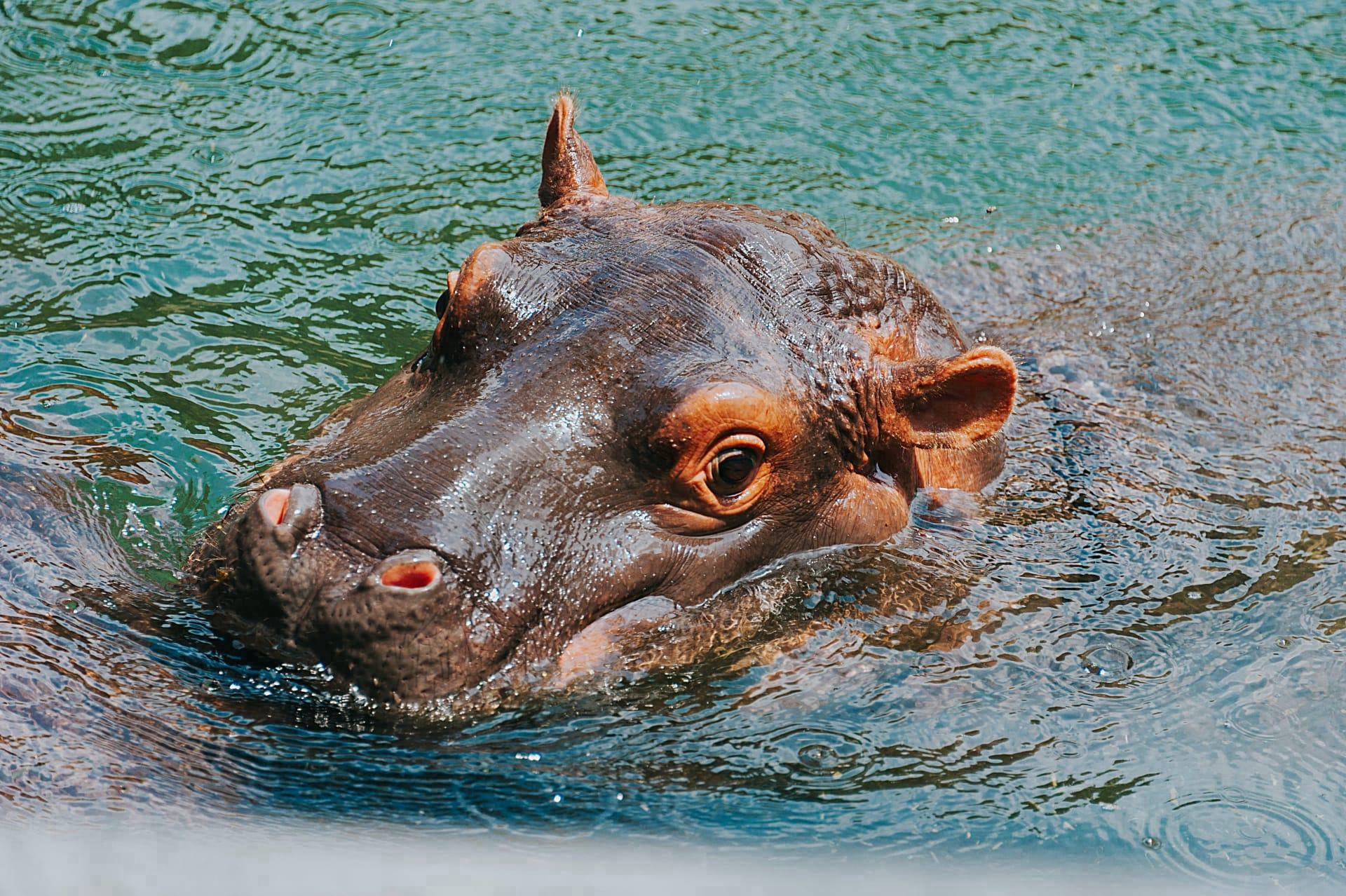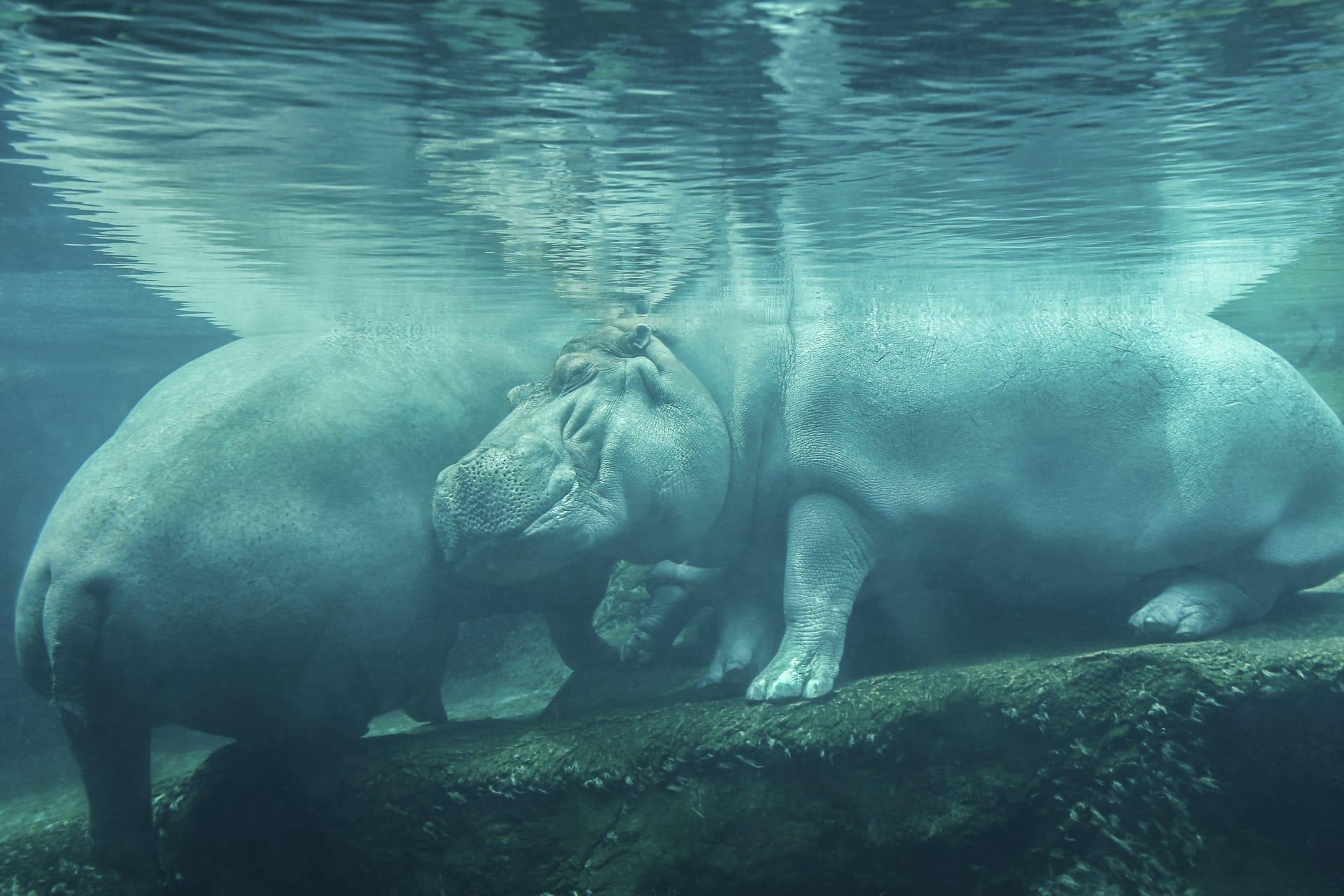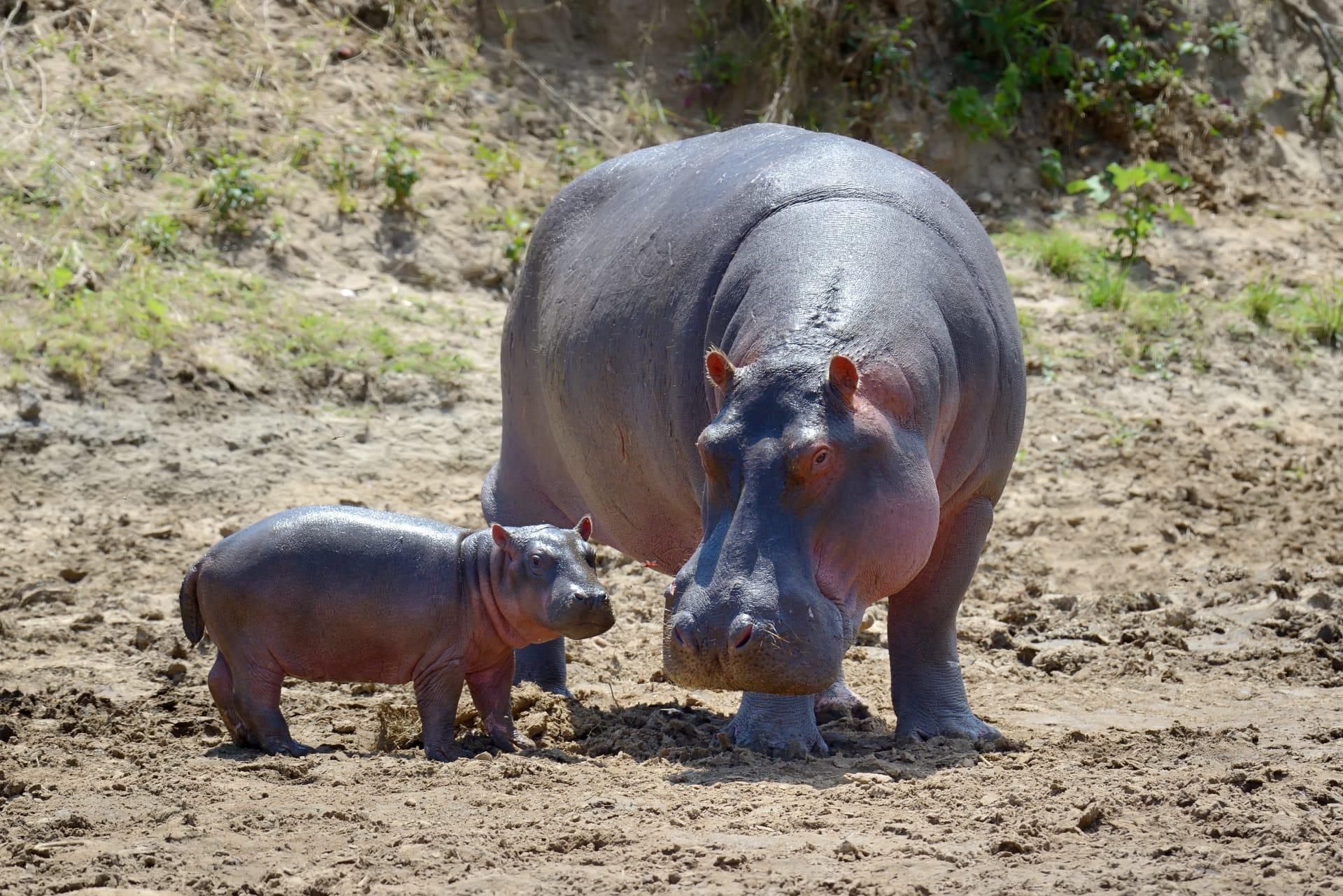1
Hippopotamuses, commonly known as hippos, are remarkable for their size and weight. Adult hippos typically weigh between 1,500 and 1,800 kilograms, with some males reaching up to 3,200 kilograms. That's equivalent to the weight of three small cars! Despite their hefty size, hippos are surprisingly agile in water. They can hold their breath underwater for up to five minutes and often walk along the bottom of rivers and lakes, using their webbed feet to propel themselves in a sort of graceful underwater gallop.
Hippos are known for their large mouths, which can open to a staggering 150 degrees wide. This wide gape is not just for show; it's a display of dominance and a warning to potential rivals. Inside their mouths, hippos have large canines and incisors, which can grow up to 50 centimeters in length. These teeth are not used for eating but are crucial in combat between rival males, often leading to severe injuries.

2
The skin of a hippo is another fascinating aspect of these creatures. It's around 6 centimeters thick, providing protection against the harsh African environment and predators. This thick skin, however, makes hippos prone to overheating. To combat this, they secrete a red, oily substance often called "blood sweat." This unique secretion acts as a sunscreen, moisturizer, and even has antiseptic properties, protecting the hippo's skin from sunburn and infection.
Despite being primarily herbivorous, hippos have an unusual and somewhat controversial role in their ecosystems as purveyors of nutrients. When they defecate in water, they release large amounts of nutrients, which can significantly impact the aquatic ecosystem. This nutrient input can lead to increased algae growth, which sometimes results in oxygen depletion in the water, affecting fish and other aquatic life. This process highlights the complex role of hippos in their habitats, as both contributors to and disruptors of the ecological balance.

3
Hippos have a unique way of communicating called "wheeze-honking," which is as peculiar as it sounds. This vocalization, a series of grunts and honks, is used to convey a range of emotions and messages, from courtship to warnings of danger. These sounds can be heard up to several kilometers away, serving as a communication network within hippo communities. Each hippo's wheeze-honk is distinctive, helping individuals recognize each other.
Interestingly, hippos are not natural swimmers, contrary to popular belief. They don't float; instead, they use their density to sink and walk or run along the bottom of rivers and lakes. This ability allows them to move swiftly in water, almost as if they were "flying" underwater. Their specific gravity is so close to the water's density that they can maintain a controlled and steady movement, giving them an elegant appearance beneath the surface.

4
Hippos play a crucial role in their habitats not only ecologically but also culturally. In many African cultures, hippos are revered and often feature in folklore and mythology. They are symbols of power, strength, and fertility. In ancient Egypt, the hippo goddess Taweret was revered as a protector of women in childbirth, showcasing the deep-rooted cultural significance of these animals.
Contrary to their docile appearance, hippos are considered one of the most aggressive animals in the world. They are highly territorial, especially in water. Hippos are responsible for more human fatalities in Africa than any other large animal. Their aggressive nature is often attributed to their territorial behavior and their instinct to protect their young. This behavior serves as a reminder of the respect and caution these mighty animals command in their natural environment.

5
Hippos have a significant impact on the African savannah's landscape. Their regular paths from water bodies to grazing areas become "hippo highways," which are used by other animals as well. These trails help other species navigate through dense vegetation and often lead to critical water sources. This behavior demonstrates the role of hippos as ecosystem engineers, shaping their environment in ways that benefit various species.
The gestation period of a hippo is about eight months, after which a single calf is born. These calves are unique as they can suckle underwater. The mother and calf have a synchronized routine, where the calf takes a breath, dives down to suckle, and then resurfaces for air. This adaptation is vital for their survival, allowing the calves to feed while staying hidden from predators. The bond between mother and calf is strong, with the calf often riding on the mother's back to conserve energy and stay safe.